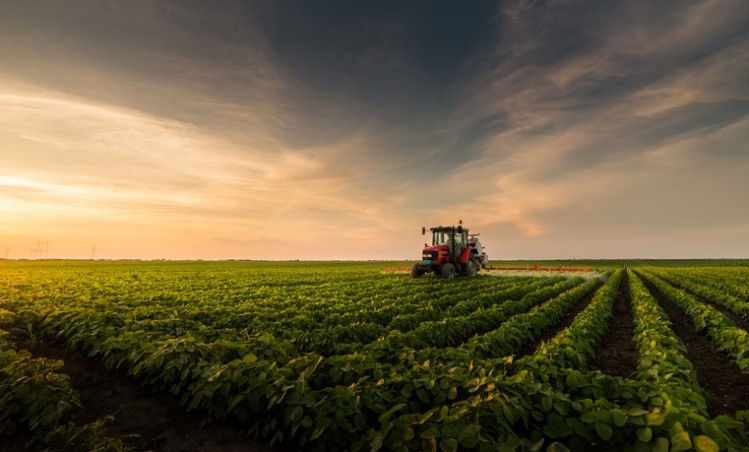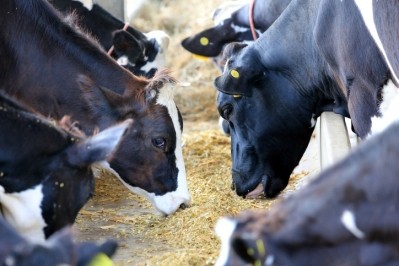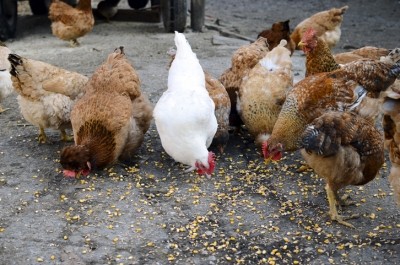Mexico: Poultry, swine sector feed use to boost oilseed imports

The US Department of Agriculture (USDA) released details of Mexico’s production and use of oilseeds in a recent report from the Foreign Agricultural Service.
Oilseed meal and oil use are expected to grow in the marketing year 2019/20, supported by strong demand for feed from livestock and poultry producers, the report authors said. However, domestic production is anticipated to see “limited growth.”
Overall, oilseed production is forecast to “rebound” in the coming 2019/20 marketing year (MY) following weather issues in 2018/19 that reduced yields, they said.
“However, the new Mexican government has generally prioritized other commodities, leaving few support programs that would encourage any expansion in oilseed planting,” they said. “As a result, Mexican oilseed production is not expected to increase significantly in the foreseeable future. Given continued demand for oilseeds for crushing, steady growth in imports is likely.”
The crushing sector is predicted to see about 3% growth based on demand for meals from livestock producers, they said. “The poultry and livestock sectors have enjoyed stronger growth, increasing demand for oilseed meals used in feed,” they added.
Oilseed production
Total oilseed production is expected to grow by about 18% in the 2019/20 marketing year, the report authors said. The majority of the expansion is expected to be in soybean production.
Planted area for soybeans is forecast to expand to 245,000 hectares – up 24% from MY 2018/19, they said. The expansion anticipates improved yields and normal weather.
However, the 400,000 metric tons (MT) anticipated remains low compared to production in MY 2017/18, they said.
“In general, many Mexican farmers are moving productive agricultural land into relatively more profitable alternative crops, such as corn or wheat,” they said. “It is unlikely that planted area will increase significantly in the coming years, as many supports granted by the Federal and state governments were canceled or reduced, which should adversely affect the planting decisions of oilseeds growers.”
Despite the increase in production, growers are only predicted to supply 7% of total domestic use, the authors said.
“Estimates for soybean production, planted area, and harvested area for MY 2018/19 have been adjusted downward,” they said.“This reduction in soybean production and planted area is due to the lack of rainfall in the main production areas,” they said. “In Tamaulipas, the severe drought in the 2018 spring/summer crop cycle caused soybean production to decrease 48.5% compared to the same crop cycle of a year earlier, to 75,397 MT."
"Mexican soybean production continues to be subject to unpredictable weather conditions, as approximately 83.2% of production takes place in non-irrigated areas,” they added.
Additionally, in MY 2019/20 rapeseed production is anticipated to fall to 3,000 metric tons based on a drop in planted area, they said. “The elimination of the oilseed governmental support, along with several cultivation problems in the production of rapeseed (canola), disincentive planting in the upcoming marketing year,” they added.
Feed use and oilseed trade
Total oilseed consumption is anticipated to grow by about 2.6% in 2019/20, the report authors said.
Soybean demand is expected to increase to 5.69m metric tons based on feed and processor demand and population growth, they said. Canola use in 2019/20 is anticipated to grow by 1.3% to 1.52m metric tons.
“This increase in demand is primarily attributable to the growth in the livestock sector and stable population growth,” they said. “It should be noted, however, [that] an anticipated slowdown in the Mexican economy could lead to a slight slump in the beef, pork, and poultry meat markets in the medium term.”
Poultry producers forecast oilseed meal use to expand about 3% in calendar year 2019, the authors said. The industry expanded its use 4% the previous year.
“The poultry sector continues to be the major consumer of soybean meal in Mexico,” the authors said. “In addition, the pork sector’s 2019 outlook is also relatively optimistic.”
Competition among crushing companies remains “intense,” they said. Adding, “Crushing margins have been very favorable in CY 2018 and are expected to increase slightly, mainly in soybeans, as the more efficient crushers control a large part of the market and international soybeans prices continue to be competitive.”
“The total Mexican oil meal production forecast for MY 2019/20 is 5.2m MT, 2.7% higher than the estimate for MY 2018/19,” they said.
“The growth is driven by greater demand for oil meal by the livestock and poultry sectors,” they said. The outlook for beef and pork producers continues to be “optimistic,” and both predict about 3% production growth in 2019.
“Soybean meal continues to dominate the Mexican market, and for MY 2019/20 soy meal is expected to account for nearly 83% of Mexico's total meal production,” the authors said. “Meanwhile, the production of oil meal from imported rapeseed is expected again to account for approximately 17% of total meal production in MY 2019/20.”
Canola meal production also is forecast to increase supported by pork production, they said.
Total oilseed imports were increased to 7.05m metric tons, based on population growth and expansion in the feed requirements in the livestock and poultry sectors, they said. Most of the soybean imports in 2018 came from the US.
“Soybean imports are expected to increase slightly in MY 2019/20 to 5.3m MT, due to the moderate increase in feed demand and population growth,” they said. Canola imports also were expected to expand slightly based on a continued bearish market lowering prices for soybeans, they added.
Total meal imports also are forecast to increase by about 2.6% in the coming marketing year, the authors said. Meal imports account for about 28% of total use.
However, the demand for distillers dried grains with solubles (DDGS) has been dropping, they said. The ingredient is often used to substitute for an oil meal in animal feed.













